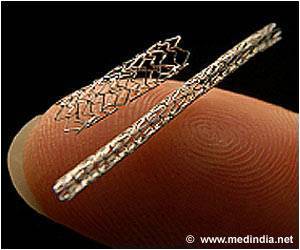Although PCI is most commonly guided by angiography alone, the use of a novel OCT-based stent sizing strategy results in similar minimal stent area.

‘Compared to angiographic-guidance, IVUS-guidance has been shown to reduce major adverse cardiovascular events (MACE).’





Findings from the ILUMIEN III (OPTIMIZE PCI) trial were reported today at the 28th annual Transcatheter Cardiovascular Therapeutics (TCT) scientific symposium. Sponsored by the Cardiovascular Research Foundation (CRF), TCT is the world’s premier educational meeting specializing in interventional cardiovascular medicine. The study was also published simultaneously in The Lancet. Compared to angiographic-guidance, IVUS-guidance has been shown to reduce major adverse cardiovascular events (MACE) after PCI, mainly by resulting in a larger post-procedure lumen. Optical coherence tomography (OCT) provides higher resolution imaging than IVUS, although some studies have suggested it may lead to smaller luminal diameters after stent implantation.
The ILUMIEN III (OPTIMIZE PCI) study was a multicenter, prospective, randomized, controlled trial conducted at 29 sites in eight countries. Patients undergoing PCI were randomly assigned 1:1:1 to OCT-guidance, IVUS-guidance or angiography-guided stent implantation. OCT-guided PCI was performed using a specific protocol to determine stent length, diameter and expansion according to reference segment external elastic lamina (EEL) measurements. All patients underwent final OCT imaging (blinded in the IVUS and angiography arms).
Between May 2015 and April 2016, 450 patients were randomized and 415 final OCT acquisitions were analyzed for the primary endpoint of post-PCI MSA, measured by OCT at an independent core laboratory. The final MSA (median [25%, 75%]) was 5.79 [4.54, 7.34] mm2 with OCT-guidance, 5.89 [4.67, 7.80] mm2 with IVUS-guidance and 5.49 [4.39, 6.59] mm2 with angiography-guidance. The MSA with OCT-guidance was non-inferior to IVUS-guidance (one-sided 97.5% lower confidence interval = -0.70 mm2, Pnoninferiority=0.0014), but not superior (P=0.42).The trend toward greater MSA with OCT-guidance compared to angiography-guidance did not reach statistical significance (P=0.12). Minimal and mean stent expansion and acute procedural success were greater in the imaging-guided arms compared to angiography.
Untreated major dissections were more common after IVUS-guided PCI than OCT-guided PCI (26.1% vs. 13.6%, P=0.0091). In the angiography-guided group, the rate of untreated major dissections was 18.6% (p=0.25). Similarly, compared with OCT-guidance, untreated major stent malapposition post-PCI was more frequent with both IVUS-guidance (20.7% vs. 10.7%, P=0.0221) and angiography-guidance (31.4% vs. 10.7%, p<0.0001). Clinical follow-up to one-year is ongoing in order to determine the clinical relevance of these OCT-based findings, as there were only six (1.3%) procedural and seven (1.6%) 30-day MACE events, with no significant differences between groups.
Advertisement
“These results are encouraging, but further study is still needed to determine whether the advantages we have identified by utilizing OCT-guidance will impact clinical outcome.”
Advertisement
The CRF Clinical Trials Center conducted the site management, data management and monitoring, biostatistics and data analysis, and core lab analyses for the trial.
The results of the ILUMIEN III (OPTIMIZE PCI) trial will be presented on Sunday, October 30 at 9:00 AM ET in the Main Arena (Ballroom, Level 3) of the Walter E. Washington Convention Center.
Source-Newswise








